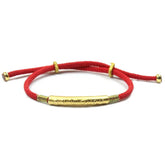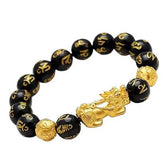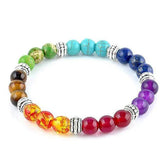Exploring the Depths of Buddhist and Tibetan Art: Insights into Spiritual Expressions
In the initial segment of our blog series on Spiritual Art, we delve into the realms of Buddhist Art and Tibetan Art. Continue reading to discover the rich origins and distinctive features encapsulated within these profound art forms!
Origin Tibetan Buddhist Art
Tibetan art underwent a significant transformation with the infusion of Greek sculptural techniques, which traveled to Tibet through India. This influence sparked a novel fusion of Greco-Buddhist artistic expression. From the late eighth century to the twentieth century, Tibetan art predominantly revolved around religious themes. It was conceived as a means to facilitate the journey towards Enlightenment. Consequently, Tibetan art can be categorized based on the diverse religious influences it embodies.
Influences of Different Religions
- Mahayana Buddhist Influence
- Tantric Influence
- Bon Influence
Mahayana Buddhist Influence
From the 4th century BCE, the rulers of the Tibetan Empire embraced Buddhism, particularly the Indian Madhyamaka tradition, as the predominant intellectual and spiritual force within the nation. Tibetan art of this era placed a strong emphasis on the significance of bodhisattvas. Among them, Avalokitesvara, the god of fortune, frequently emerged as the central figure, often depicted with a thousand arms and a single eye in the palm of each hand.
The majority of Tibetan Buddhist art is intertwined with tantra, with a significant aspect being the portrayal of deities adorned with fierce, wrathful expressions resembling death's visage. These depictions symbolize 'the protectors,' whose intimidating demeanor serves to veil their underlying compassion and empathy.
The native shamanic faith of the Himalayas is known as Bon. Within Tibetan temples, alongside images of Buddha or Padmasambhava, one can often find depictions of "the protectors" and their formidable countenances. During times of adversity, these protectors were believed to bring harm and illness to local communities. Padmasambhava emerged as a counterforce against these malevolent influences.
Tibetan Buddhist Artworks
The bulk of Tibetan Buddhist artists were skilled artisans who had undergone formal training. Typically, they operated on a commission basis, yet their identities remained largely anonymous. Consequently, the vast majority of artworks produced in Tibet lack attribution to specific painters.
The earliest Buddhist artworks consisted of sculptures and rock carvings portraying the life of Buddha. These pieces predominantly utilized symbols rather than direct depictions of Buddha, leaving us with little insight into his physical appearance. As Buddhism expanded beyond India, diverse regional influences began to shape Buddhist art. Temples and monasteries were adorned with paintings of Buddha, becoming a common sight.
Beyond Buddha paintings, Tibetan Buddhist art encompasses various other popular forms, including:
- Sand Mandalas
- Thangkas
- Tsakli
- Ghau
- Dpal Be’u
Sand Mandalas
Tibetan monks create mandalas for festive occasions and ceremonial purposes. Crafting a mandala requires precision, keen observation, and steady hands. Monks wear masks during the process to prevent the sand from being disturbed. Young monks dedicate hours to mastering basic patterns. Following the ceremony, the mandala is ceremoniously swept away. Interested in learning how to create your own mandala? Explore our blog on Making Mandalas for guidance and inspiration.
Thangkas
A thangka, crafted from silk or cotton, is a revered Buddhist painting. Ancient guidelines dictate the permissible shapes, colors, and patterns for these artworks. Tibetan Buddhists incorporate thanks into their meditation practices.
Tsakli
Another painting with ritual importance is tsakli. Tsaklis, small sacred relics, hold protective properties. They are utilized for various purposes, such as safeguarding individuals during travel, providing protection before the construction of a temple, or aiding in the healing of the sick.
Ghau
A Ghau serves as a receptacle for relics or amulets, typically worn as a pendant around the neck or incorporated into the hair. It may contain a miniature statue of a Tibetan deity or Buddha.
Dpal Be’u
The Dpal Be’u, also known as the Tibetan Endless Knot, holds significant symbolism within Tibetan Buddhism, embodying two key concepts. Firstly, it visually depicts the perpetual cycle of birth, suffering, death, and rebirth, which practitioners seek to transcend. Secondly, it symbolizes the inseparable connection between wisdom and compassion, essential attributes along the journey to enlightenment.
Contemporary Tibetan Buddhist Art
While numerous artists continue to create in Tibet, a significant portion of contemporary Tibetan art found in the West originates from Tibetan artists living in exile. Historically, up until the 1950s, Tibetan art was predominantly shaped by Buddhist influences. However, in modern times, although many artists still draw from traditional Buddhist imagery, a new movement has emerged wherein religious themes may play a lesser or nonexistent role, paving the way for alternative inspirations.
One notable figure from the early 20th century is Gendün Chöpel, whose artistic career flourished primarily during his time in India.
Since June 2017, the Museum of Contemporary Tibetan Art has been situated in Emmen, the Netherlands. The museum's inception was driven by the vision of Tibetan artist Tashi Norbu, who sought to establish a cultural bridge between East and West.








Leave a comment
All blog comments are checked prior to publishing